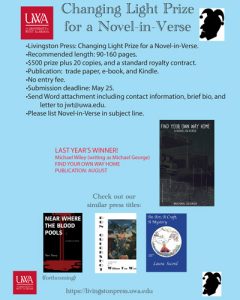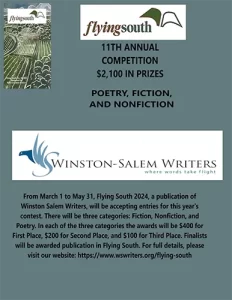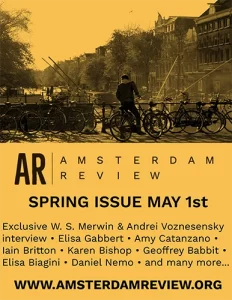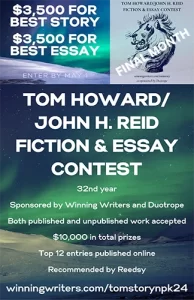Annalemma – 2010 No 7
Endurance
Issue 7
2010
Biannual
Tanya Angell Allen
The “Endurance” issue of Annalemma should be abysmally depressing, as all of the stories and essays in it are sad. The great care put into its design, however, gives one answer to the editor’s question of “what gives a person forward momentum when every sign around them says give up.” Editor/publisher Chris Heavener says that “to endure means having a purpose.” His publication shows that one can find purpose though literature and art.
The “Endurance” issue of Annalemma should be abysmally depressing, as all of the stories and essays in it are sad. The great care put into its design, however, gives one answer to the editor’s question of “what gives a person forward momentum when every sign around them says give up.” Editor/publisher Chris Heavener says that “to endure means having a purpose.” His publication shows that one can find purpose though literature and art.
The magazine’s pieces touch on subjects such as spousal abuse (in the reprint of Zora Neale Hurston’s “Sweat”), the death of childhood friends (Salvatore Pane’s “This is how the Century is Born” and Amber Sparks’ “You Will Be the Living Equation”), and the illness and death of children (Roxanne Gay’s “Fire Pieces of a Broken Heart” and Justyn Harkin’s “Rainbow Dogs”). The work is filled with cleverness, humor and, in an odd way, pleasure.
In Justyn Harkin’s “Rainbow Dogs,” for example, one senses the narrator dealing with the fear of losing a child by figuring out how to turn his situation into a story. His pleasure in the clever application of words also shows in the first few sentences: “We have a nurse today whose name is Steve. Steve is a nurse but he is not a fag. Steve has sandy brown hair and it is short. Steve has a bristle brush mustache and it is serious.” Harkin’s wording, like much of the rest in the magazine, is taut and smart.
It’s the art and design of Annalemma that really makes it exceptional, though. The showpiece is Ted Hollin’s portfolio of photographs from the Zora Neale Hurston Festival of the Arts and Humanities. One of his most striking shots is of three black women in church-going clothes—gloves, long dresses, and fans—leaping through the Macedonia Baptist church that Zora Neal Hurston’s minister father used to preach in. The photograph is filled with joy. The subjects most likely couldn’t help but know what an amazing sight they made, and the photographer must have taken delight in capturing it.
Most of the other art in the issue was created especially for it, as the editors regularly ask artists to send them jpegs, and if they like what they see, they commission illustrations. A few of the magazine’s pictures can currently be seen on the Internet, such as Zachary Zezima’s two for Nicolette Kittinger’s “Relations,” and Jesse Hlebo’s photographs for Jen Knox’s “At The Window” on the Annalemma website. Sam Brewster illustrates the first page of “Rainbow Dogs” with a red, green, and yellow picture of the waiting room doors of a children’s hospital, all named with animals. (Burned children are in “Bunny,” for example, and children with respiratory problems are in “Horse.”)
The artwork helps draw readers to the stories. It’s marvelous to see what care the artists take in reading and illustrating them. The magazine designers also show care even in the layout of print, pulling out and showcasing lines like “HE LICKS HIS THUMB AND RUNS IT ACROSS ONE OF THE FLOWERS, AND THE FLOWER DISAPPEARS AS HIS THUMB GROWS STAINED,” (from “Fire Ants” by Brian Allen Carr.) Because of details like these, it’s probably as great a pleasure for the writers to see the way their work is treated in the magazine as it is for the magazine’s readers.
There is aesthetic beauty in this hip, young-feeling magazine, and beauty is one of the main things that helps people endure. Aesthetic beauty will, quite likely, also help Annalemma itself endure, as—judging from the astonishing popularity of graphic designer/writer Dave Eggers’s McSweeneys, one of the smartest things editors can do is invest time in great design. Design is what makes many want to share a magazine with friends. Design can make a good magazine great. This particular magazine, founded in 2007, will hopefully endure for a very long while.
[annalemma.net/]




